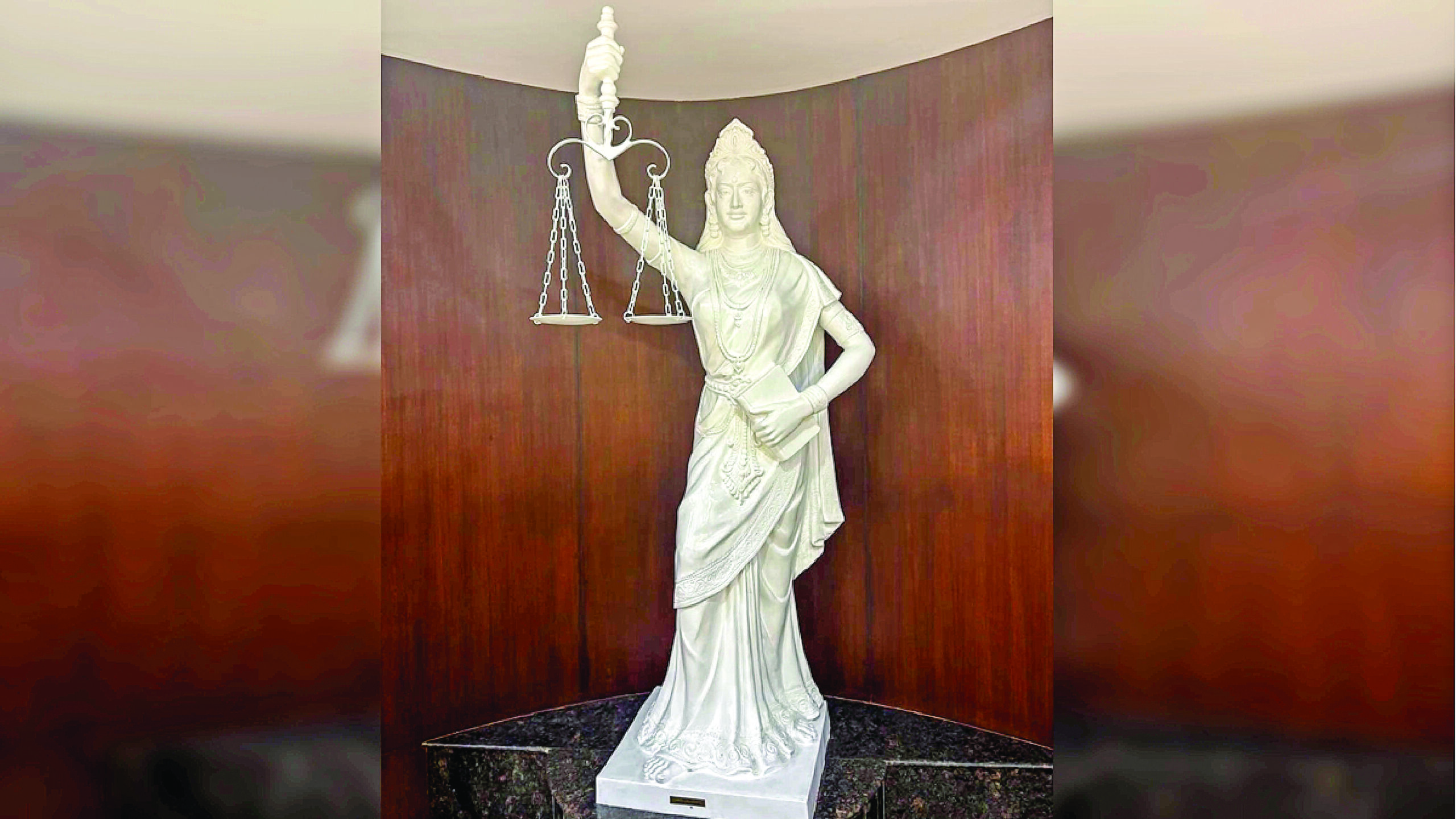Kanoon k haath bahut lambey hote hain lekin kanoon andha hai…”
This iconic dialogue from the Bollywood film Andha Kanoon translates to “the hands of law are long, but the law is blind.” The phrase encapsulates the complex relationship between justice and the legal system, emphasizing that while the law has extensive reach, it can sometimes fail to see the nuances of individual cases. This sentiment resonates deeply with the visual representation of justice in India: the blindfolded statue of the Goddess of Justice, also known as Lady Justice. This statue stands as a powerful symbol of justice, fairness, and equality under the law.
Typically depicted as a blindfolded woman holding a balance scale in one hand and a sword in the other, Lady Justice embodies the ideal of impartiality in the application of justice. The blindfold signifies that justice should be administered without bias toward wealth, power, or social status. The balance scale represents fairness, where both sides of a dispute are weighed equally before arriving at a verdict. Meanwhile, the sword symbolizes the authority of the law to enforce penalties for wrongdoing.
Lady Justice’s historical roots in India can be traced back to the colonial era, when British legal practices heavily influenced the Indian judicial framework. Statues of Lady Justice were erected in courthouses across the country, serving as a reminder of the rule of law and the fundamental principles of justice. The symbolism of Lady Justice has thus evolved alongside India’s own journey toward establishing a fair and equitable legal system.
In recent years, significant developments have occurred regarding the representation of Lady Justice in India. The Supreme Court has introduced a new statue of Lady Justice that signifies a departure from its colonial legacy. This contemporary depiction features Lady Justice without a blindfold, holding the Indian Constitution in place of the sword. This transformation is emblematic of a broader shift in the Indian legal system, emphasizing justice grounded in constitutional principles rather than merely enforcing punitive measures.
The decision to replace the sword with the Constitution symbolizes a commitment to protecting individual rights and upholding democratic values. By holding the Constitution, Lady Justice now represents a legal system that adapts to the evolving needs of society, prioritizing fundamental rights over coercive enforcement. This change aligns with the ideals enshrined in the Indian Constitution, emphasizing that justice is not merely about punishment but about protecting the rights of all citizens.
The white color of the new Lady Justice statue is also significant, representing purity, impartiality, and fairness. This color choice reinforces the notion that justice should be administered without bias and corruption. It reflects a commitment to integrity in the judicial process, underscoring that the law should serve all individuals equitably, regardless of their background or circumstances. Adorned in traditional Indian attire and jewelry, this modern representation connects with the cultural identity of India while remaining rooted in universal principles of justice.
This statue has been positioned in the judges’ library at the Supreme Court, commissioned under the directives of Chief Justice DY Chandrachud. The Chief Justice emphasized that this reimagined form of Lady Justice should serve as a reminder that the Constitution is the guiding force in administering justice, contrasting the violent connotations associated with the sword. This transformation sends a clear message: justice is to be rendered according to constitutional mandates rather than through coercive means.
The evolution of the Lady Justice symbol in India reflects a broader commitment to modernizing the judicial system and moving away from colonial influences. This transformation is more than cosmetic; it signifies a deep-seated desire to align the legal system with the values of equality and justice enshrined in the Indian Constitution. The scales of justice, retained in her right hand, continue to signify the essential balance within society and the court’s responsibility to weigh the facts and arguments presented by both parties before rendering a verdict.
As a powerful emblem in legal discourse, the Goddess of Justice serves not only as a reminder of the principles guiding the judiciary but also as an enduring representation of the aspirations for justice and fairness in a democratic society. The transformation of Lady Justice reflects the legal system’s evolving understanding of its role in a rapidly changing social landscape.
The reimagined statue of Lady Justice is also an important step toward fostering public confidence in the administration of justice. By emphasizing constitutional adherence and the values of equity and impartiality, the judiciary can strengthen its legitimacy in the eyes of the public. A legal system that is perceived as fair and just encourages citizens to seek redress through formal channels, reinforcing the rule of law and the principle of justice for all.
This renewed emphasis on constitutional values also holds particular significance in contemporary India, where issues of social justice, gender equality, and human rights have taken center stage. The judiciary’s role in safeguarding these rights is paramount, and the modern representation of Lady Justice serves as a potent symbol of this commitment.
In summary, the dialogue “Kanoon k haath bahut lambey hote hain lekin kanoon andha hai” serves as a poignant reminder of the complexities within the legal system. The transformation of Lady Justice from a blindfolded figure holding a sword to a more enlightened representation holding the Constitution signifies a pivotal shift in the Indian legal landscape. This change not only reflects a departure from colonial influences but also highlights a renewed commitment to justice grounded in constitutional principles.
As Lady Justice stands as a powerful symbol in courthouses and legal institutions, she embodies the ideals of fairness, equality, and the pursuit of justice in a democratic society. The evolution of her image resonates deeply with the aspirations of citizens and the judiciary alike, reminding us that justice must always strive to be accessible and equitable, upholding the fundamental rights of all individuals.
Through these representations, we are continually reminded that justice, in its truest form, should never be blind to the realities of those it serves.
Neha Sharma, Assistant Professor, School of Legal Studies, Apeejay Stya University, Gurgaon
Dr. Pyali Chatterjee, HOD, Faculty of Law, ICFAI University, Raipur, Chhattisgarh







